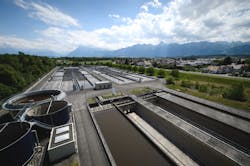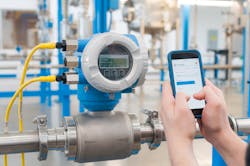Calibrating Success: Improving Flowmeter Accuracy
Water utilities with highly successful monitoring programs tend to share a common trait: when it comes to calibration, they have a well-defined plan that emphasizes frequency and tracking. However, when done properly, this process is time-consuming and often leads to unnecessary labor and downtime.
Flowmeter calibration is a phrase that’s often used generically, and in many cases, people say it when they are referring to verification. The latter is a qualitative process to ensure a meter is within the original tolerances of the wet factory calibration, but without going so far as to remove it from service. Verification is used to demonstrate the flowmeter meets specific requirements defined by the customer or manufacturer. Reliable verification can be accomplished using two different methods: either via an external handheld or simulator or by an internal verification. Both methods are based on traceable references; however, internal verification is based on traceable and redundant references built into the flowmeter’s electronics.
True calibration involves quantitatively comparing measurements made by a device against a known, traceable standard. Thus, with inline flowmeters the device must be removed from the line and sent back to a NIST traceable facility to be recalibrated, which is both time consuming and costly and, in some instances, not possible. Verification does, however, offer water managers the confidence to leave devices in place until a true calibration necessitates removal. The biggest impact of this occurs with flowmeters, which provide critical information used in operations and compliance.
Diagnostics to detect problems are performed continuously, and a verification is done on demand from the automation control system or at the instrument itself.
If the diagnostics detect an error, an alarm message is displayed on the flowmeter’s front panel and sent as a message over the interface to the automation control system. The message also includes troubleshooting tips and remedial instructions. While regular calibration of flowmeters and other devices used by a water utility is ideal, the process can be expensive and onerous. Advanced self-verification technology offers a promising way to increase the time between true calibration to avoid as much unnecessary cost and labor as possible. WW
Endress+Hauser is exhibiting at ACE20, booth 3526. Learn more at us.endress.com.

